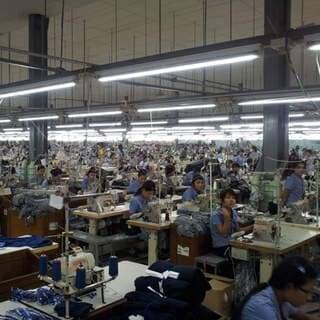Ref: 395
May 9, 2016
Contract Workers
CITI has been vigorously pursuing to drop archaic provisions in labour laws. One demand of the textile industry is that due to the cyclical nature of demand for textiles, the industry should have flexibility in the matter of labour employment.
Central Govt. has proposed that the Contract Labour Act be amended as under:-
- “the rates of wages payable to workmen by the contractor shall not be less than:-
- the rates prescribed under the Minimum Wages Act, 1948 (11 of 1948)
for such employment where applicable; or
- the rates, if any, fixed by agreement, settlement or award, or
- ten thousand rupees,
CITI has vehemently opposed to the above amendment on behalf of textile industry as the proposed wages of contract workers are higher than the existing wages and will make the textile manufacturing in the country uneconomical.
An excellent comparative table on minimum wages vis-a-vis per capita income of different countries has been prepared by CITI which is reproduced below
Per capita income and minimum wage [US $]
| 2015 | |||
| Annual per capita income [USD] | Annual Minimum Wages [USD] | Wages as % to per capita income | |
| China | 7223 | 6000 | 83 |
| India | 1610 | 1818 | 113 |
| Bangladesh | 1103 | 924 | 84 |
| Wages including social security | |||
If minimum wages are compared in relation to per capita income, it is clear that the Indian textile industry is the highest paymaster; with minimum wages being 113% of per capita income, against 83% in the case of China and 84% in case of Bangladesh.
It appears that Government is likely to fix contract workers’ wages at Rs.10,0000/- per month .CITI has requested for reconsideration of the same . However, it needs to be noted that no notification has been raised so far on the subject.
Praiseworthy development in Arvind M ills
Textiles has become part of the fashion industry. Following this development, Arvind Mills is in talks to acquire the online Fashion and Lifestyle startup.
Certainly, this will give a big boost to their sales.
We wish Arvind Mills all success in their new project.
TUFS
The picture about continuance or otherwise of this hag shop scheme of the Ministry of Textiles is still hazy. In the meantime, funds allocated for TUFS in 2016-2017 are only Rs.1356 crore; whereas nearly Rs.7000 crore are needed to square up all pending demands.
With the large segment of the of the spinning sector having been modernized to the international and have started manufacturing faultless and flawless yarns of superior quality, such mills are standing shoulder to shoulder with the best in the world.
Unfortunately, the same thing is not true in respect of weaving, processing and garmenting. These segments are largely in the decentralized sector and require user-friendly TUFS to undertake the full advantage of the scheme. A hidden benefit of such a development is that the demand for machines required for weaving, processing and garmenting may increase to economic levels and thus the production of such latest machinery may start in the country, whereby further modernization will become economical.
International Trade
The international textile market was quite dull in 2015-16, due to global concerns, like adverse foreign currency, rates, lack of industrial and economic improvement, sharp increase in unemployment, setback in commodity markets.
Exports of all items from India suffered a setback of 17%. Conversely, textiles and clothing reported a better performance. In 2014-2015, exports of textiles and clothing aggregated to US $ 37 billion. This year, it is expected to be around US $ 35-36 billion, thus showing a marginal fall.
If separate figures of export of textile and clothing are considered, the fall was marginal in the case of clothing, while textiles suffered the brunt of the decline in exports.
Year 2016-17 promises to be better due to improvement in general economic conditions.
Important Developments in April 2016
The summer season starts with April, but it is never so hot as it was this year. Hot months force people to go to hill stations and hence April is a period of lull. April is also the time to review the economic progress of the industry. April 2016 was exceptionally hectic, particularly for the textile industry.
Sunset review of anti-dumping duty on imports of viscose fibre.
At the instance of the domestic industry of viscose fibre, anti-dumping duty was imposed on 26th July 2010 for a period of 5 years. The sunset review started this year and the stakeholders are now awaiting the decision of the Director–General of Anti-dumping duties. who is also called the Designated Authority
Imports of viscose fibre ranged from 14 M Kg in 2010-1 to above 30 M Kg in 2015-16.
In the meantime, domestic production ranged from 305 M Kg in 2010-11 to 365 M Kg in 2014-15 and was somewhere around 342 M Kg in 2015-16. The production was stagnant in the 3 years of 2013-14 to 2015-16.
The increase in imports in the intervening period was due to a sudden jump in exports from 56.24 M Kg in 2010-11 to 156 M Kg in 2015-16.
It appears the domestic manufacturer finds export market more lucrative.
All the stakeholders are now awaiting the decision of the anti-dumping authority.
Efforts of Grasim to meet the rise in demand for VSF.
According to a report in Economic Times dt.9th May 2016, Grasim has decided to take steps to meet the rise in demand whenever it takes place.
Grasim is also planning to manufacture anti-microbial fabric, which prevents germ accumulation on the material and is more hygienic. Thus, the company will certainly capture a special space in the international market.
All this sounds good.

